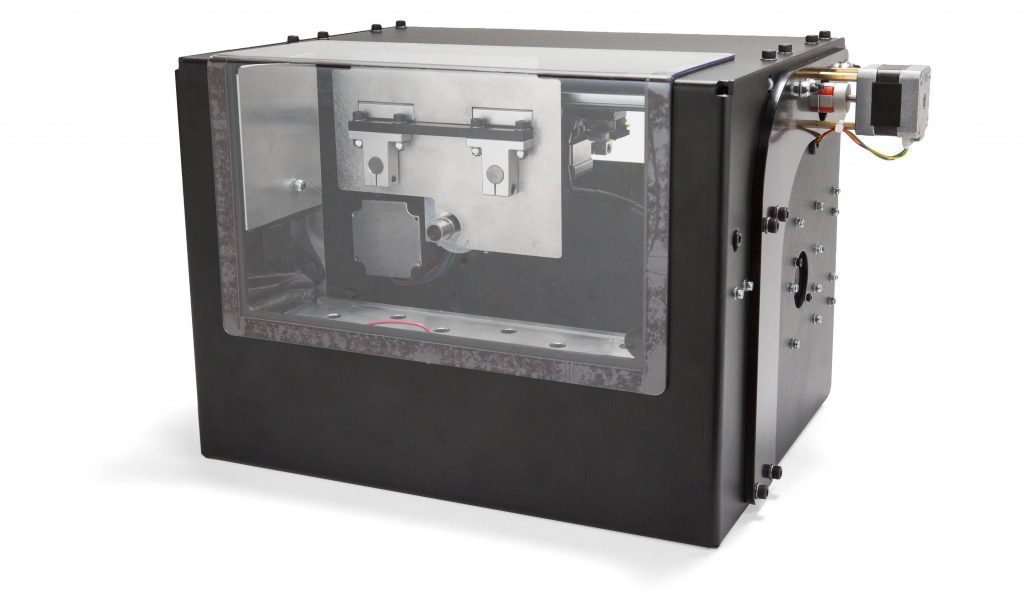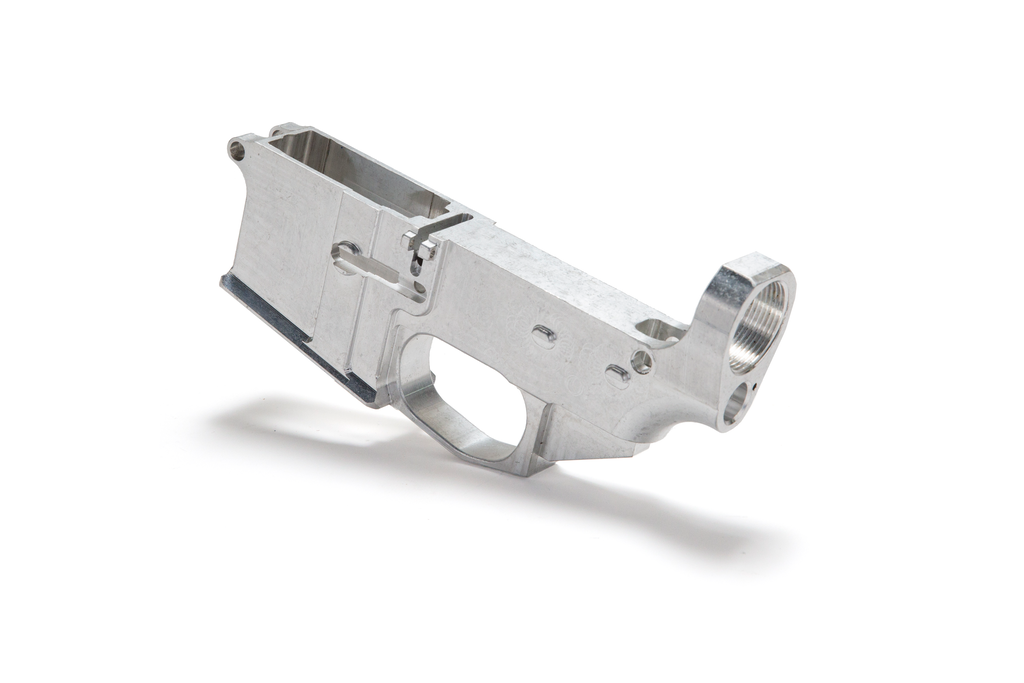Defense Distributed Ghost Gunner 2: First Impressions

Following the school shooting in Parkland, Florida, the media has been awash with calls for a rehash of the 1994 Assault Weapons Ban, with the AR-15 serving as the centerpiece for the current attack against the 2nd Amendment. While gun control advocates argue that the ubiquitous sporting rifle is “too easy to buy”, there is an outlier in the debate that I’ve rarely seen them acknowledge— only spoken of in passing before attention is quickly redirected towards their usual scapegoats. Once a hot topic, unserialized homemade firearms, often called “ghost guns”, have faded into the background noise of the gun debate, and now is the perfect time for those who support the inalienable right to keep and bear arms to make one for themselves.
Under the provisions of the Gun Control Act of 1968 (GCA68), anyone that isn’t prohibited from buying firearms can legally build a non-NFA firearm, though some states and localities (here’s looking at you, Commiefornia) may have restrictions in place. These firearms need no serial number, provided they’re made for personal use and without intent to sell or transfer. This precedent has led to some interesting situations with law enforcement, with at least one of such forever cemented in /k/ommando lore. “But Gaussifer,” you might say, “I think pipe shotguns are garbage, but I don’t have bar stock and a 5-axis CNC machine. How can I easily build a mil-spec firearm at home?” The answer: 80% frames and receivers.

A milled aluminum paperweight. The unfinished fire control group pocket is what keeps this from being a firearm.
As defined in GCA68, The receiver or frame of the firearm is the firearm: it’s the one part that’s given a serial number and regulated in commerce. One can buy any other part online without need for a background check or FFL. “80%” is a marketing term for a receiver left unfinished enough to not be considered a firearm by the ATF, or in layman’s terms, a fancy paperweight that you can turn into a gun. Manufacturers go out of their way to get approval letters from the ATF stating that the unfinished part they sell isn’t a firearm. Most companies that sell 80% receivers also sell jigs that aid the end-user in finishing the receiver with a drill press, router, or mill. But what about someone like the metropolitan man? Someone who might not have machining experience, space for tools, or nearby workshops to rent out machines? I present to you the Ghost Gunner.
The Ghost Gunner is the brainchild of crypto-anarchist Cody Wilson, founder of Defense Distributed and father of the 3D-printed gun. This black box is a desktop CNC mill that lets anyone with a computer automatically turn 80% receivers into guns with the push of a button. Wilson, the self-proclaimed Johnny Appleseed of the American black rifle, created the Ghost Gunner as a means of raising funds for his lawsuit against the US Department of State. Originally only able to mill AR-15 lowers, DefDist has since expanded upon the Ghost Gunner with an upgraded version, the Ghost Gunner 2, and code releases enabling users to complete unfinished frames for other firearms, most recently the 1911. Here’s an account of my experience with the Ghost Gunner 2.
I purchased 3 80% AR-15 lowers in October of 2017, and it was then when DefDist announced the release for their 1911 milling codes, setting the bar for every other code release to follow. Wilson claims that because the upgraded machine can handle the notoriously finicky tolerances of the 1911, the GG2 is consistent and precise enough to complete any unfinished aluminum firearm that can fit inside it. Upon hearing this news I was ecstatic, and my inner mad scientist had to have one. After eating nothing but frozen tendies and instant ramen for a month I finally saved up the cash and purchased a GG2 with a GG jig set for AR-15 lowers. Altogether the GG2 and jig set cost $1,817 after shipping and handling.
Each machine is hand-built and tested at Ghost Gunner HQ in Austin, TX and has a lead time of about 8-10 weeks. However, my order was delayed due to high demand. DefDist had just released an update with the 1911 code release, which more than likely prompted a surge in orders from people who were previously on the fence about the GG2’s capabilities. Another compounding factor was the approaching holiday season, with a Black Friday sale adding on top of the previous surge. DefDist also advertised at SHOT Show for the first time, and with the effective date for California’s new law fast approaching, it’s no wonder that DefDist is neck-deep in orders. Especially now in the panic-buy aftermath of Parkland, wary Americans are purchasing GG2s wholesale in preparation for incoming legislation.
After 3 months with minimal updates, I emailed Ghost Gunner customer support to gain a more detailed status of my order (Note: you can email them at any point after an order is confirmed). To my relief, customer support responded within a few hours to assuage my doubt. Turned out my GG2 was set to ship in a week. After nearly 110 days of waiting, I finally received my GG2 on February 27th. It arrived well-protected, with thick closed-cell foam cushioning the machine and a special compartment for the USB flash drive containing DefDist’s software. Although the GG2 is no larger than your average microwave oven at 11.5 x 14.5 x 10.5 inches, it’s steel construction contributes to its heft of 52 lbs. The GG2 came with everything necessary to start milling AR-15 lowers, with a 1st time setup guide, power/USB cables, wrenches to change out collets and tools, an end mill, drill bit, and most importantly the flash drive (Note: while the GG2 is available for sale in Canada and Mexico, the flash drive isn’t available to customers outside the US due to ITAR).
Getting started was simple enough, plugging the GG2 into a power outlet and hooking it up to my laptop turning it on. I booted up the AR-15 code in DefDist’s included software and watched as the machine whirred to life and homed itself on all axes, waiting for me to move on to the next step. The included code breaks it down for you Barney style, with captioned images guiding you through each step of the process. After setting up the necessary jigs and making sure the receiver was positioned for probing, I started the milling operation. It’s fairly loud when it’s cutting, I’d say around 80 dB going by ear alone. One can definitely hold a conversation over it, but for those who are thinking about using the GG2 in an apartment, pray your walls are thick enough or prepare for noise complaints. Lines of G-code flew across my screen as the program milled out the fire control group (FCG) pocket and trigger hole, taking about 2 hours to complete. I was confident enough in the machine that I left the room halfway through the process and came back 30 minutes later. The GG2 ran without a hiccup, the receiver warm to the touch as I vacuumed out the small mountain of accumulated chips and repositioned the receiver to drill out the safety selector hole and the holes for the trigger and hammer pins. These took no longer than 15 minutes to complete. Once the program was complete and the GG2 shut down, I quickly cleaned and inspected the newly-made ghost gun.
I checked all of my dimensions, cross referencing my measurements with mil-spec AR-15 lower receiver blueprints. The surface finish of the FCG pocket was satisfactory with only faint tool marks left behind. This can be improved further by slowing the feed rate during milling with the included software. The depth of the FCG pocket was spot-on, and the trigger hole was perfectly centered. The selector hole and the holes for the trigger and hammer pins were also drilled perfectly. However, the walls of FCG pocket itself were off-center by a considerable amount. The FCG pocket itself doesn’t need to be centered and its width (the important measurement) was well within tolerance, but it left me annoyed. Still, there are plenty of examples of off-center FCG pockets in mass-produced AR-15s that work perfectly fine.
The GG2 is an open source platform, and there’s an active community of GG owners on Facebook willing to answer any questions about the machine and help anyone with issues. Further reading in the Ghost Gunner Facebook group revealed that off-center FCG pockets are a common issue as some 80% lowers are sold slightly out-of-spec, and there is community-modified milling code to fix the off-center pocket (Note: Some 80% lowers may also have the selector detent hole drilled off-spec. This causes the selector to appear crooked when indexed. This has no effect on the function of the selector and is solely cosmetic). There’s also a sub-group dedicated solely to developing and beta-testing new code, and with DefDist’s upgraded machine a whole new library of firearms to make has been opened. Even the hardware is open-source, with files for 3D-printable jigs available and ready for modification by the end-user. At SHOT Show DefDist confirmed that they will be officially releasing milling code for both Polymer80 Glock frames and AR-9 lowers later this year, and both DefDist and the GG Facebook group are working on code for 80% 10/22 receivers. There’s also a community-made engraving program that generates code from a browser-based applet. If development keeps up and our rights aren’t further infringed upon (here’s hoping!), I’d say the future of Ghost Gunner is looking bright.
Pros and Cons
+ Portable
+ Easy to use
+ Precise
+ Fast
+ Open source, helpful community
– Expensive
– Noisy
– Currently lacking firearms options: only AR-15, AR-10 (DPMS Gen 1), and 1911 are possible. New code coming soon.
– Limited to aluminum and softer materials, insufficient cooling for steel.
Final Thoughts
I won’t lie, this thing is expensive. $2000 is a lot of money to spend if you’re the kind of person who only intends to make a rifle or two for hidden storage in case of a government crackdown. If that’s the case, get an Easy Jig. Contrarily, if you want to give Defense Distributed your money and do something meaningful with your “donation”, or if you’re a tinkerer who likes to experiment and do R&D, or if you’re a ghost gun enthusiast looking for a comprehensive platform to make both pistols and rifles, the Ghost Gunner 2 is definitely for you. Do I regret my purchase? Not at all. The Ghost Gunner 2 is one of the cheapest desktop CNC mills with the ability to make a firearm, and is arguably the easiest to use by far, which is a boon for those without machining experience. If you were on the fence or just about ready to buy a Ghost Gunner 2, the perfect time to buy one was yesterday. Given current events, the longer you wait to buy one, the longer it will be till yours arrives. Defense Distributed is currently swamped with orders, and they’ll be swamped for much of the foreseeable future. Act fast.
Defense Distributed can be found at https://defdist.org/ and https://twitter.com/DefDist
Cody Wilson can be found at https://twitter.com/Radomysisky
The Ghost Gunner 2 can be purchased at https://ghostgunner.net/





2 Responses
[…] Ghost Gunner 2, a machine that I’ve reviewed in the past, has expanded its capabilities thanks to both DefDist and a community willing to test the limits of […]
[…] Ghost Gunner 2, a machine that I’ve reviewed in the past, has expanded its capabilities thanks to both DefDist and a community willing to test the limits of […]